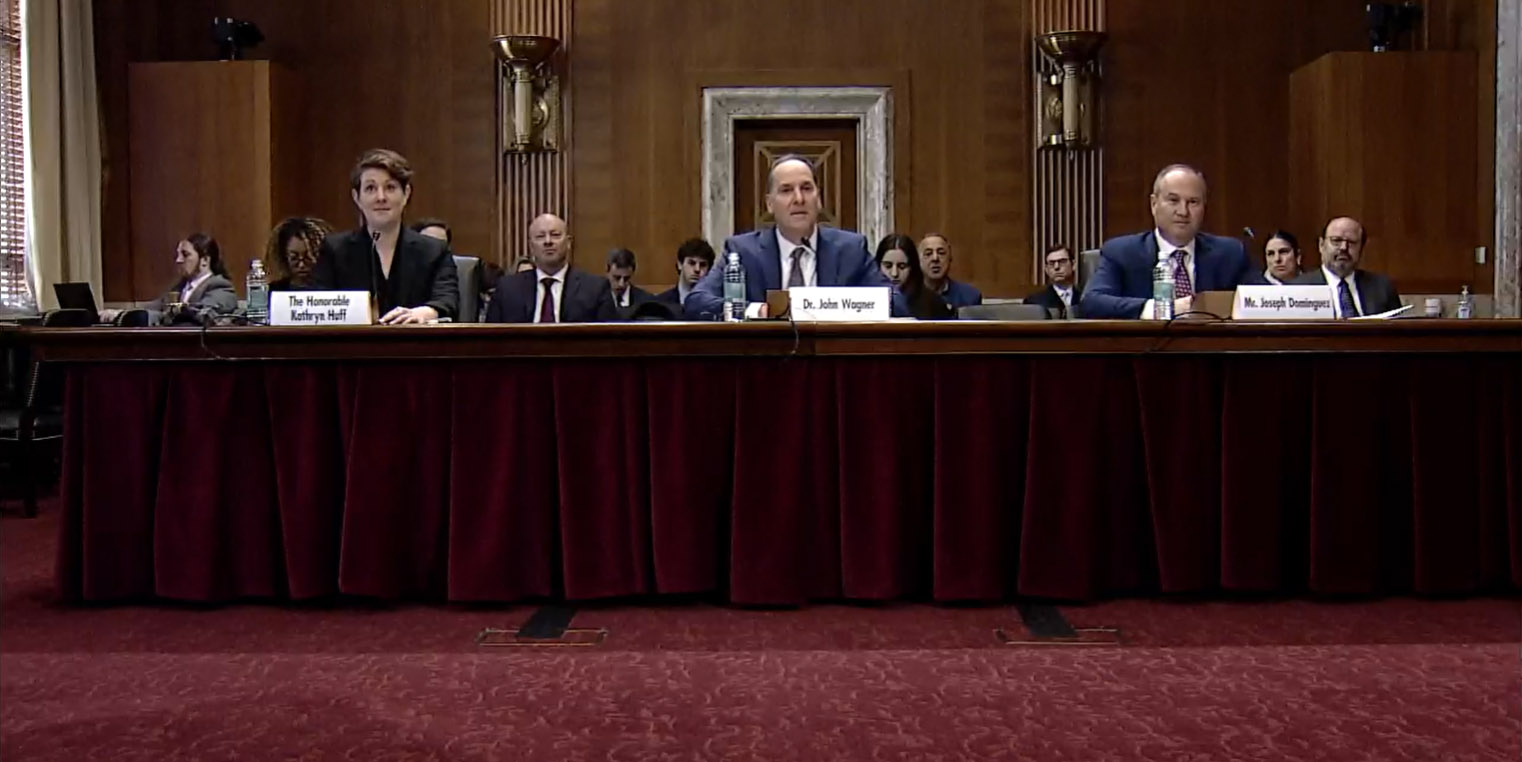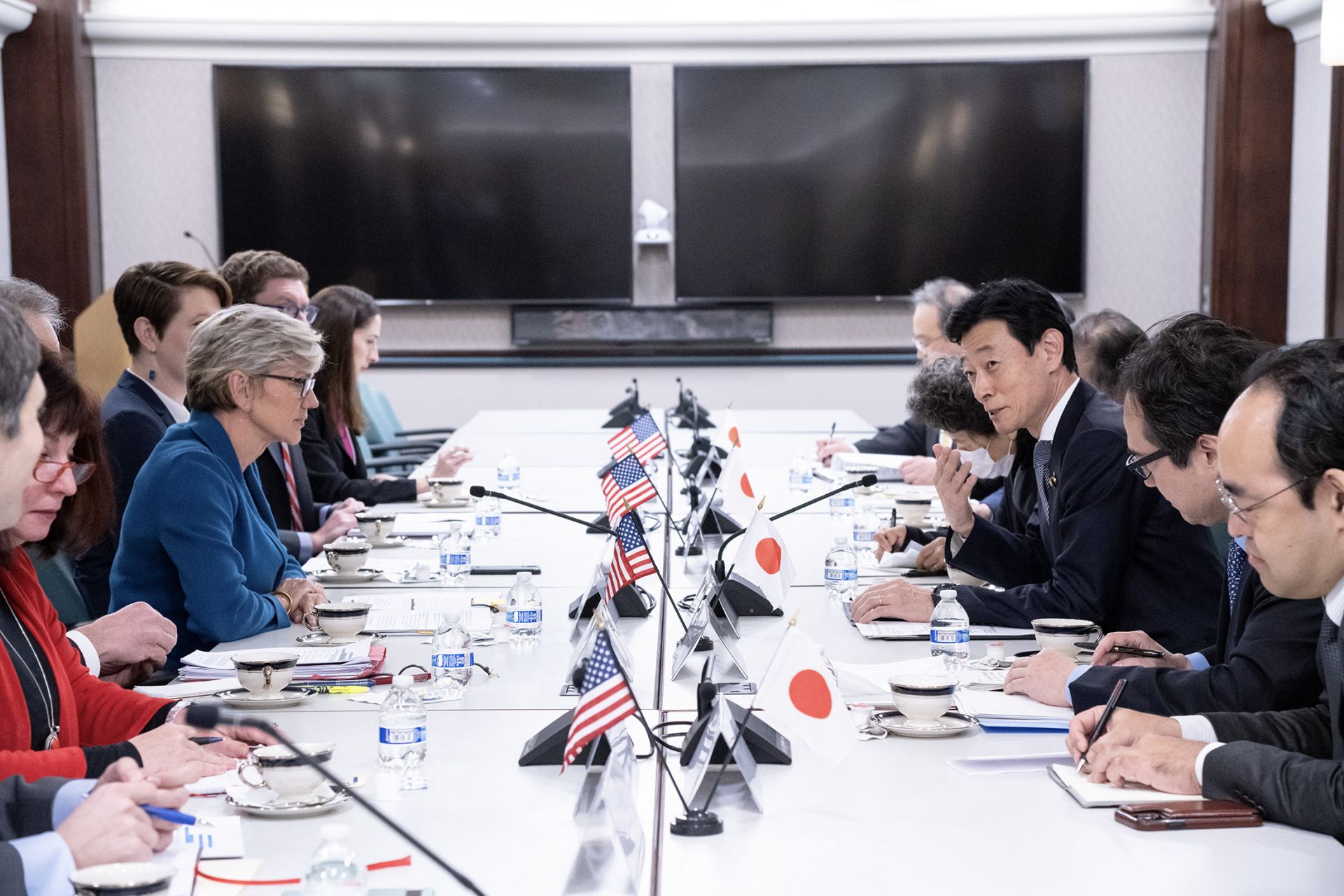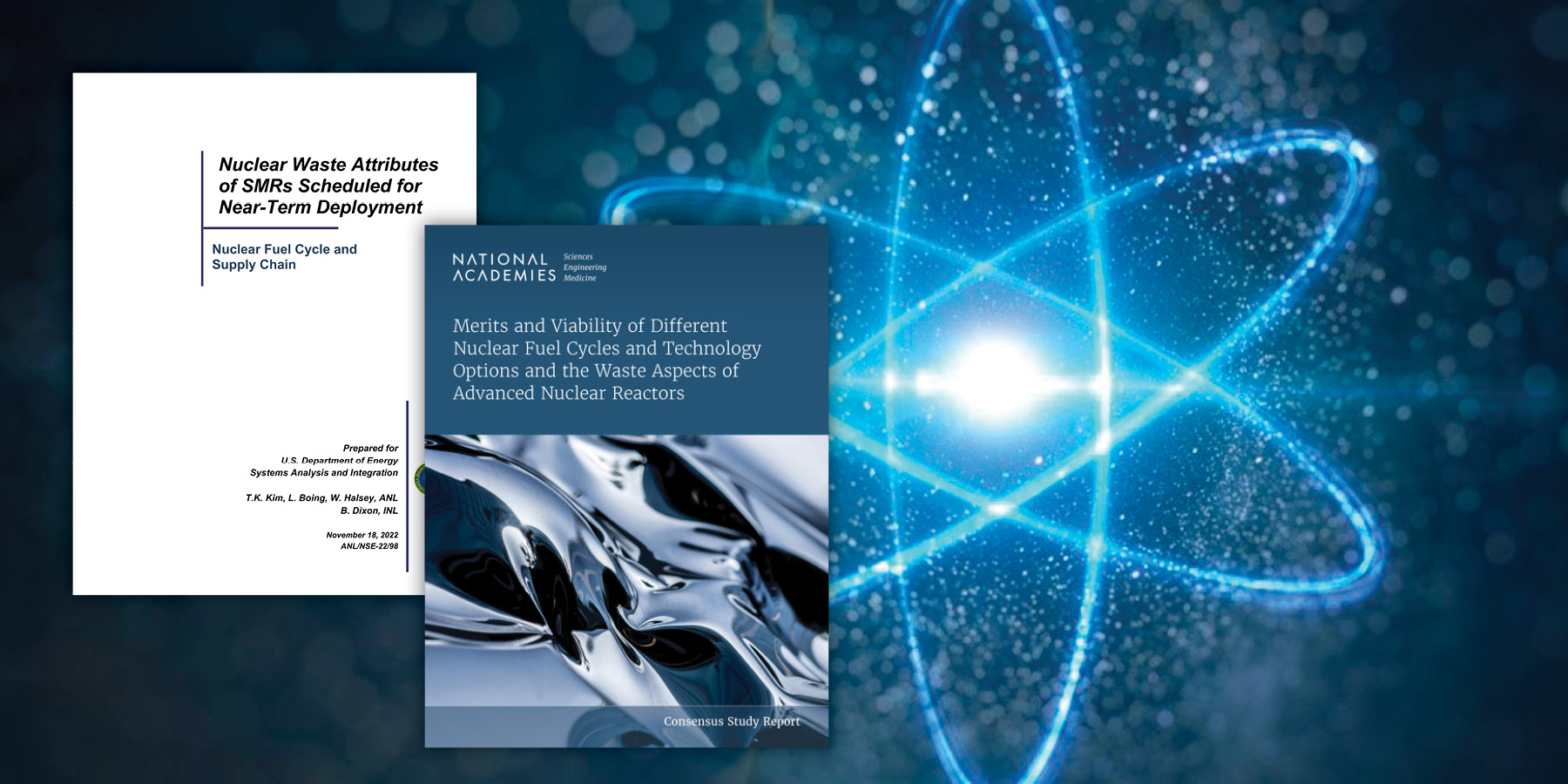March 14, 2023, 9:39AMEdited March 14, 2023, 9:38AMNuclear News In this screenshot from a video recording of the hearing, Huff, Wagner, and Dominguez answer a series of questions from Sen. Manchin
“Right now, our country is deficient in nearly every aspect of the fuel cycle. This must change and it must change quickly,” said Sen. Joe Manchin (D., W.V.), chairman of the Senate Committee on Energy and Natural Resources (ENR), as he opened a Full Committee Hearing to Examine the Nuclear Fuel Cycle on March 9. “Whether it is uranium mining, milling, conversion, enrichment, nuclear fuel fabrication, power generation, or nuclear waste storage and disposal, there is much work to be done, starting with conversion and enrichment. Simply put, Russia dominates the global market, representing nearly half of the international capacity for both processes.”
Using GeoMelt ICV technology to treat and immobilize problematic low-level wastes at INL and WCS.
A sample of GeoMelt glass. (Photos: Veolia)
When it comes to managing nuclear waste, technology is transforming the way some of the most problematic waste is handled. The idea to transform nuclear waste into glass was developed back in the 1970s as a way to lock away the waste’s radioactive elements and prevent them from escaping. For more than 40 years, vitrification has been used for the immobilization of high-level radioactive waste in many countries around the world, including the United States.
Industry professionals visit INL as part of a U.S. Nuclear Industry Council Conference. (Photo: INL)
The Department of Energy’s commitment to breaking down market barriers with initiatives, programs, and access to facilities is making it simpler and more efficient than ever for industry to partner with national laboratories. It is especially timely, as the country continues to face evolving security, economic, and clean energy challenges. Partnering opportunities via the DOE’s Cooperative Research and Development Agreements (CRADAs) and Strategic Partnership Projects (SPPs) are particularly prevalent in the commercial nuclear community and have seen a tremendous amount of funding and support dedicated to advancing the development, demonstration, and deployment of new reactor technologies.
U.S. secretary of energy Jennifer Granholm and Japan’s minister of economy, trade, and industry Yasutoshi Nishimura lead energy discussions on January 9 in Washington, D.C. (Photo: DOE)
Researchers at Idaho National Laboratory have completed initial testing on a newly developed fuel test capsule that is expected to provide crucial performance data for sodium-cooled fast reactors. The Department of Energy announced on January 12 that the series of fuel testing experiments being carried out now at INL’s Transient Reactor Test Facility (TREAT) was developed through a joint project between the United States and Japan.
The Integrated Waste Treatment Unit at the Idaho National Laboratory Site. (Photo: DOE)
The Department of Energy’s Office of Environmental Management (EM) said that the Integrated Waste Treatment Unit (IWTU), the radioactive liquid waste treatment facility at the Idaho National Laboratory Site, began its final heat-up in December prior to initiating radiological operations, planned for early this year.
IWTU crews were to follow a prescribed incremental process as the facility transitions from simulant to sodium-bearing waste (SBW), according to EM.
INL’s Materials and Fuels Complex. (Photo: INL)
The Department of Energy announced $150 million in Inflation Reduction Act funding on October 25 for infrastructure improvements at Idaho National Laboratory. According to the DOE, the funding will support nearly a dozen projects at INL’s Advanced Test Reactor (ATR) and Materials Fuels Complex (MFC), both of which have operated for more than 50 years. The investments in existing infrastructure assets mean support for nuclear energy research and development, including fuel testing, bolstering the near-term supply of high-assay low-enriched uranium (HALEU), and reactor demonstrations.
The Integrated Effects Test at TerraPower’s laboratory in Everett, Wash. (Photo: Southern Company/TerraPower)
“The world's largest chloride salt system developed by the nuclear sector” is now ready for operation in TerraPower’s Everett, Wash., laboratories. Southern Company, which is working with TerraPower through its subsidiary Southern Company Services to develop molten chloride reactor technology, announced on October 18 that the Integrated Effects Test (IET) was complete. The multiloop, nonnuclear test infrastructure follows years of separate effects testing using isolated test loops, and it was built to support the operation of the Molten Chloride Reactor Experiment (MCRE) at Idaho National Laboratory that the companies expect will, in turn, support a demonstration-scale Molten Chloride Fast Reactor (MCFR).
A rendering of the Versatile Test Reactor site. Image: INL
LA GRANGE PARK, Illinois – Idaho National Laboratory’s crucial Versatile Test Reactor (VTR) project is the focus of a newly released special issue of Nuclear Science and Engineering, the first and oldest peer-reviewed journal in its field. This special issue of the American Nuclear Society’s flagship journal presents a current snapshot of the nuclear innovation project at INL, which is being developed in partnership among six national labs and a host of industry and university partners.
Pictured during a tour of the EBR-II site are, from left, Robert Boston, DOE-ID manager; Rep. Mike Simpson (R., Idaho); Secretary Granholm; Director Wagner; and Marianne Walck, INL deputy laboratory director for science and technology. (Photo: INL)
Energy Secretary Jennifer Granholm visited Idaho National Laboratory on August 3 to meet with INL staff, including director John Wagner, as she toured key research facilities on INL’s 890-square-mile site and the lab’s campus in Idaho Falls.
An artistic rendering of the Versatile Test Reactor. (Image: DOE)
The Department of Energy today issued a Record of Decision (ROD) for the Final Versatile Test Reactor Environmental Impact Statement (final VTR EIS; DOE/EIS-0542). The VTR will be a sodium-cooled, fast-neutron-spectrum test reactor that will enhance and accelerate research, development, and demonstration of innovative nuclear energy technologies critical to tackling the climate crisis, according to the DOE.
The VTR ROD and final VTR EIS are available for viewing or download here.
















